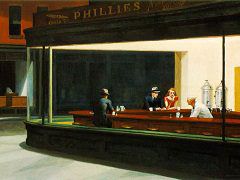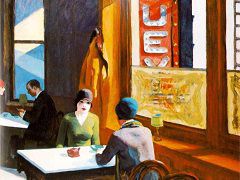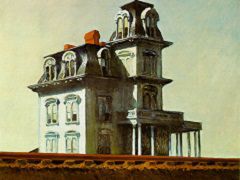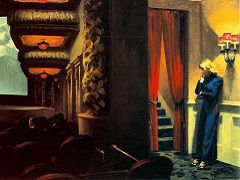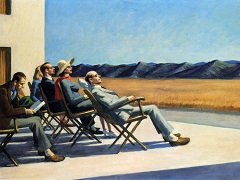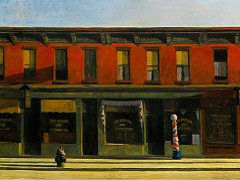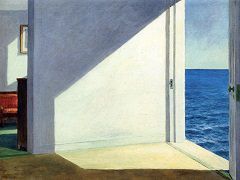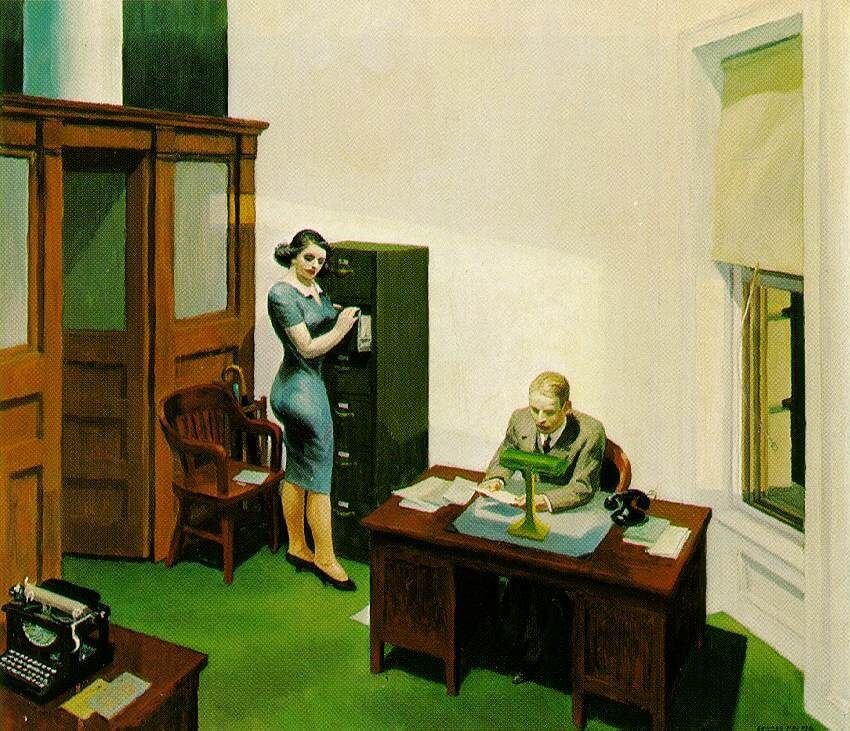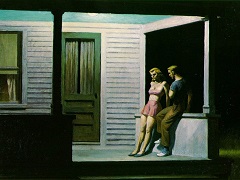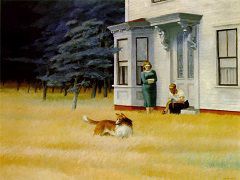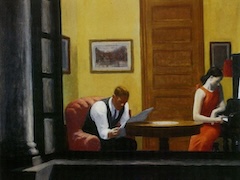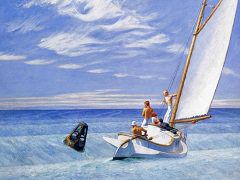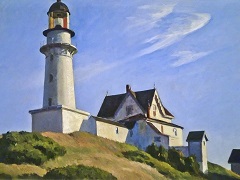Approaching a City, 1946 by Edward Hopper
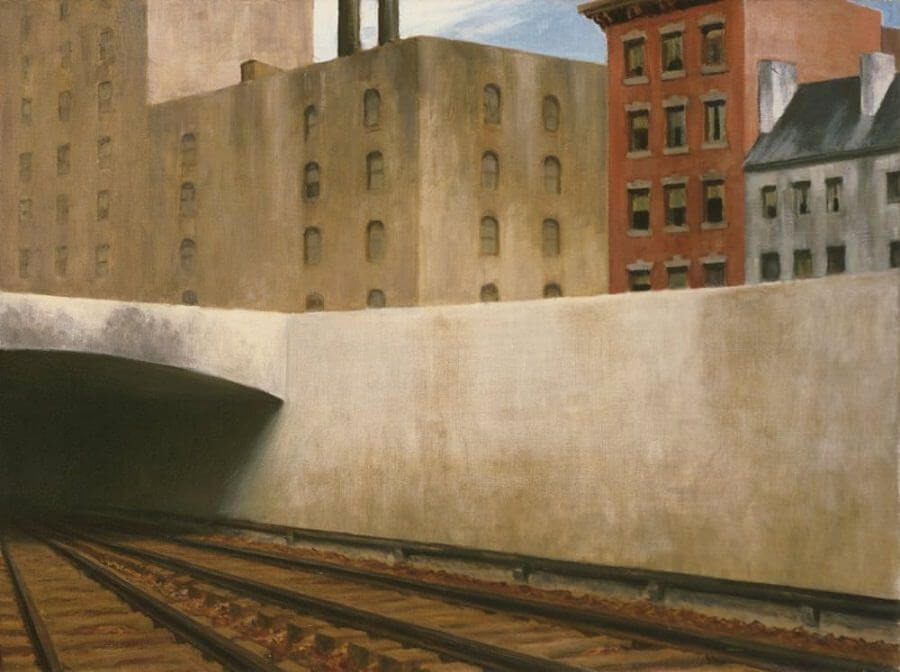
In the rare cases when Edward Hopper depicts rails running into the picture, a sense of threat accompanies them. In Approaching a City, 1946, Hopper couches this sense in a compelling visual metaphor: a cavernous tunnel
leading into the bowels of the city. It opens out to receive the traveller like a dark maw from which there is no escape.
But there are other situations in which darkness threatens someone on the move. It stretches like an impenetrable wall in front of the woman sitting in a hotel foyer at night, attempting to catch a glimpse of the dark street
through the window. Her glance is reflected, and all she can see beyond the black wall are phantoms. Nobody is still out at this hour; the woman waits in vain.
Yet light can be even more merciless than darkness. When you consider the light in Hopper's pictures - cold, bright, often glaring light: sunlight, electric light, fluorescent light, light as if cast by spotlights - you realize
that light can indeed be ruthless. George Segal, the American sculptor, once quipped, "When you get to Hopper all of a sudden you have to put on your sunglasses." Hopper's light can be blinding, but it has no warmth. It can
awaken the hope of a new life only to disappoint it a moment later - think of the many female figures who bask in the sun, receptive and full of expectation, but who are apparently

